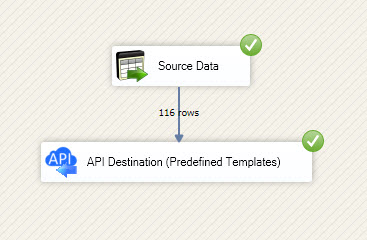Writing data in SSIS
In this section we will learn how to configure and use Zoho CRM Connector in the API Destination to write data to Zoho CRM.
Video tutorial
This video covers following and more so watch carefully. After watching this video follow the steps described in this article.
- How to download SSIS PowerPack for
Zoho CRM integration in SSIS - How to configure connection for
Zoho CRM - How to write or lookup data to
Zoho CRM - Features about SSIS API Destination
- Using
Zoho CRM Connector in SSIS
Step-by-step instructions
In upper section we learned how to read data, now in this section we will learn how to configure Zoho CRM in the API Source to POST data to the Zoho CRM.
-
Read the data from the source, being any desired source component. In example we will use ZappySys Dummy Data Source component.
-
From the SSIS Toolbox drag and drop API Destination (Predefined Templates) on the Data Flow Designer surface and connect source component with it, and double click to edit it.
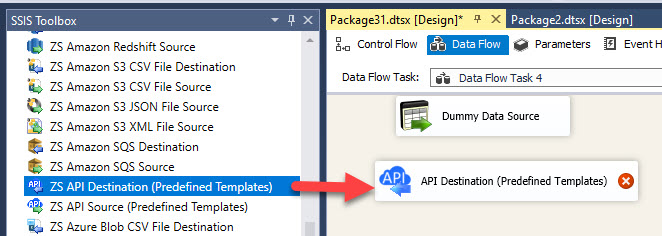
-
Select New Connection to create a new connection:
API Destination - Zoho CRMZoho CRM Connector can be used to integrate Zoho CRM API in your App / BI Tools. You can exchange data on Accounts, Leads, Contacts and many other modules.
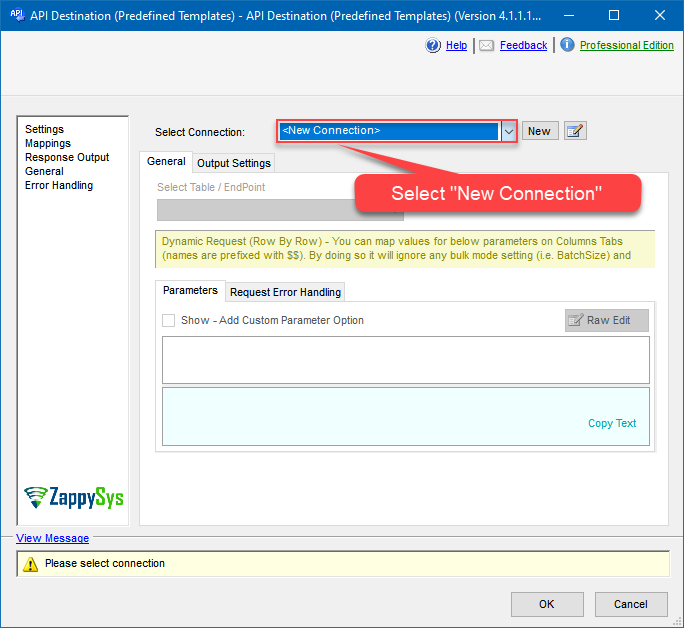
-
Use a preinstalled Zoho CRM Connector from Popular Connector List or press Search Online radio button to download Zoho CRM Connector. Once downloaded simply use it in the configuration:
Zoho CRM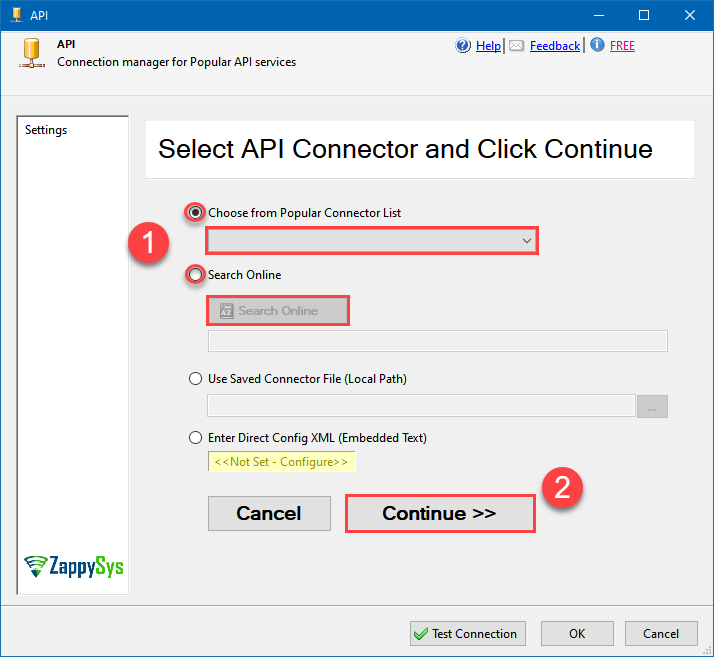
-
Proceed with selecting the desired Authentication Type. Then select API Base URL (in most cases default one is the right one). Finally, fill in all the required parameters and set optional parameters if needed. You may press a link Steps to Configure which will help set certain parameters. More info is available in Authentication section.
Zoho CRM authentication
OAuth Connection for Zoho CRM API [API reference]
To register custom App, perform the following steps (Detailed steps found in the help link at the end)- Go to Zoho API Console
- Click Add Client link
- Select Server-based Applications option
- Enter desired client name (Display purpose only)
- Enter some URL for Company homepage
- For Authorized Redirect URI enter https://zappysys.com/oauth (Or enter your own but we recommend using ZappySys one if possible). This URL must match on Zoho Connector UI.
- Click CREATE.
- Copy Client ID and Secret and paste on Zoho Connector UI.
API Connection Manager configuration
Just perform these simple steps to finish authentication configuration:
-
Set Authentication Type to
OAuth [OAuth] - Optional step. Modify API Base URL if needed (in most cases default will work).
- Fill in all the required parameters and set optional parameters if needed.
- Press Generate Token button to generate the tokens.
- Finally, hit OK button:
Zoho CRMOAuth [OAuth]https://www.zohoapis.com/crm/[$Version$]Optional Parameters ClientId ClientSecret Permissions ZohoCRM.settings.all ZohoCRM.modules.all ZohoCRM.coql.READ AccountUrl https://accounts.zoho.com RedirectUrl https://zappysys.com/oauth API Version v2 RetryMode RetryWhenStatusCodeMatch RetryStatusCodeList 429 RetryCountMax 5 RetryMultiplyWaitTime True 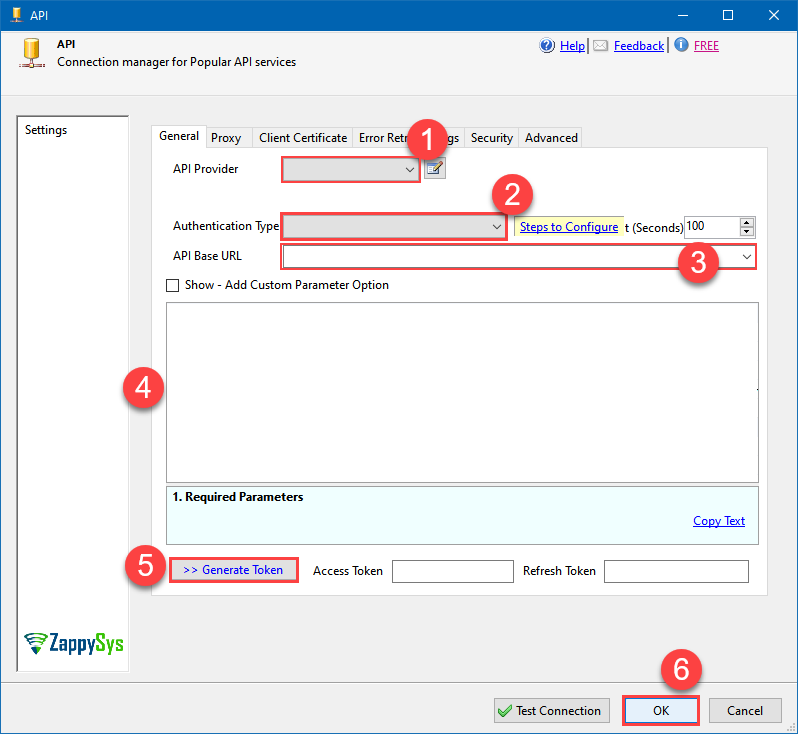
-
Select the desired endpoint, change/pass the properties values, and go to the Mappings tab to map the columns.
API Destination - Zoho CRMZoho CRM Connector can be used to integrate Zoho CRM API in your App / BI Tools. You can exchange data on Accounts, Leads, Contacts and many other modules.
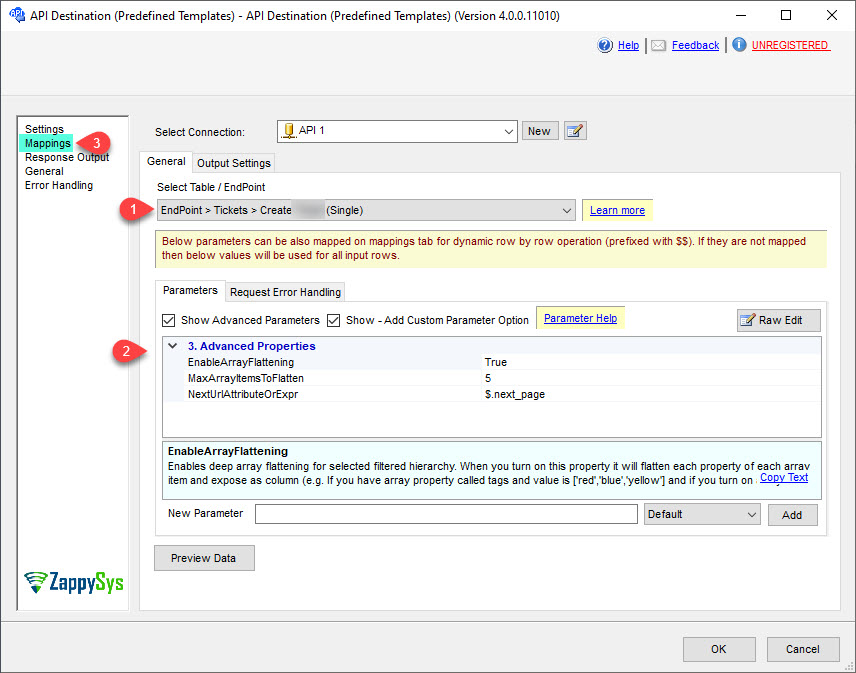
-
Finally, map the desired columns:
API Destination - Zoho CRMZoho CRM Connector can be used to integrate Zoho CRM API in your App / BI Tools. You can exchange data on Accounts, Leads, Contacts and many other modules.
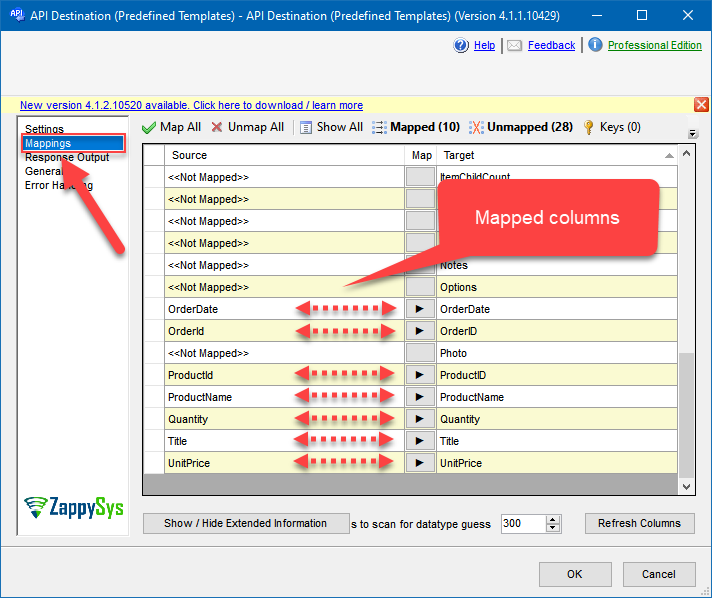
-
That's it; we successfully configured the POST API Call. In a few clicks we configured the Zoho CRM API call using ZappySys Zoho CRM Connector
